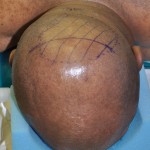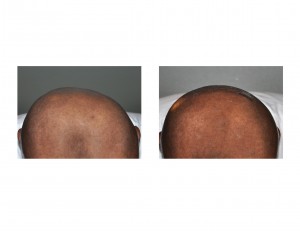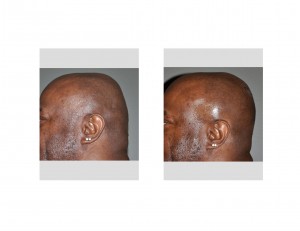Background: The shape of the head is largely determined by the skull that lies underneath it. Its normal oblong shape is created by the multiples plates of skull bone formed in utero that only formally fuse together after birth. The rapidly developing and expanding brain has great influence on forming the skull shape, much like an internal tissue expander.
But if the bone is blocked from being expanded, it will result in the push of the brain being directed elsewhere. This blocking effect can be created by a suture fusion (craniosynostosis) or an external force. By far, the most common cause of skull asymmetry is external molding. The most frequent form of external molding is inadvertent pressure caused by laying on one side of the head too long as a baby. This causes a classic flattening on one side of the back of the head with compensatory overgrowth on the other side. This is known as occipital deformational plagiocephaly. On careful examination, one can often see from above that the entire head is twisted or rotated causing a cranioscoliosis effect in more severe cases.
With today’s shorter hairstyles and shaved heads, bothersome flat spots on the back of heads are becoming more evident. Often the ear on the flat side is moved further forward than the opposite ear and even the neck muscles on the flat side are asymmetric to the other side. These posterior skull asymmetries have given rise to patient’s requesting if they can be improved by some form of plastic surgery.
Case Study: This 42 year-old man was extremely bothered by the flat spot on the left side of back of his head. He had shaved his head for years since he began balding. To hide his concern about his flat spot, he always wore a hat to camouflage it. In discussing the option of a craniplasty correction, the issue of the trade-off of a fine scar was discussed. His level of concern about the back of his head made the scar issue a palatable exchange.



Case Highlights:
1) One of the most common skull deformities is flattening on the back of the head, also known as occipital deformational plagiocephaly.
2) Building up the flat back of the head is done by an onlay cranioplasty procedure, using a variety of different materials.
3) Using an open approach, an occipital cranioplasty procedure is both very effective and involves minimal recovery.
Dr. Barry Eppley
Indianapolis, Indiana


